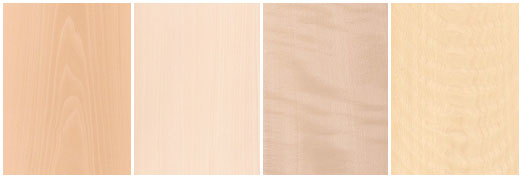Wood veneer is sliced from the log in various methods, dried and used as a natural and sustainable product in a wide array of industries. Only logs with specific characteristics are selected to produce veneer–it is estimated that less than 5% of all logs harvested are of veneer quality. Raw veneer can be used and finished in many different ways to provide a unique natural effect. Veneer can also be processed and treated to provide additional unique features.
Constant Color (CoCo)

The CoCo process of heat, water, and pressure accelerates the natural change of color in veneer and imbues a consistent tone that echoes the look and feel of aged Bog Oak. Several light, medium and dark shades of brown and grey are produced creating a veneer that is environmentally friendly, available in high volume and with colors that are consistent from flitch to flitch. CoCo veneers are an excellent choice for creating seamlessly matched installations on large-scale projects.
Fumed

Fumed veneer is steamed with ammonia to darken and "age" the wood. The environmentally friendly process takes three to four weeks and produces no waste. Fuming penetrates the wood producing a rich permanent color that varies by species. While almost any wood with tannins can be fumed, the process is especially well suited for Oak, Pine, Larch, Swiss Pearwood, and Douglas Fir.
Reconstituted

Reconsitituted veneer is rotary cut from fast growing secondary species and then dyed, layered, laminated and laid up with grain that replicates a natural species. Recon offers outstanding consistency in color and grain, making it an ideal choice for large-scale architectural projects and phased developments. Because it is man-made, flitches are available in standard sizes that simplify planning and maximize yield.
Vintage (Reclaimed)

Vintage (reclaimed) veneer is sliced from reclaimed hand-hewn beams of old barns, farmhouses and other structures. This rustic-looking veneer is intended for use in random matched sequences. Attention should be given to the layout and process when laying up panels as these veneers can contain knot holes and other character marks that may require filling in the manufacturing process.
Steamed

Steamed veneer is processed with hot water for certain light-colored woods, producing a soft, pink color in the wood; the longer it's steamed, the deeper the color. Designers seek these veneers for the rosy glow they create in architectural interiors. Sycamore, Beech, and select other light-colored woods can be acquired in steamed veneer.
We've built a robust inventory of these special veneers to meet our customers' demands for unique looks and consistency in high-volume work. Talk with us - we can provide a wide range of options and quick lead times in response to your needs.
